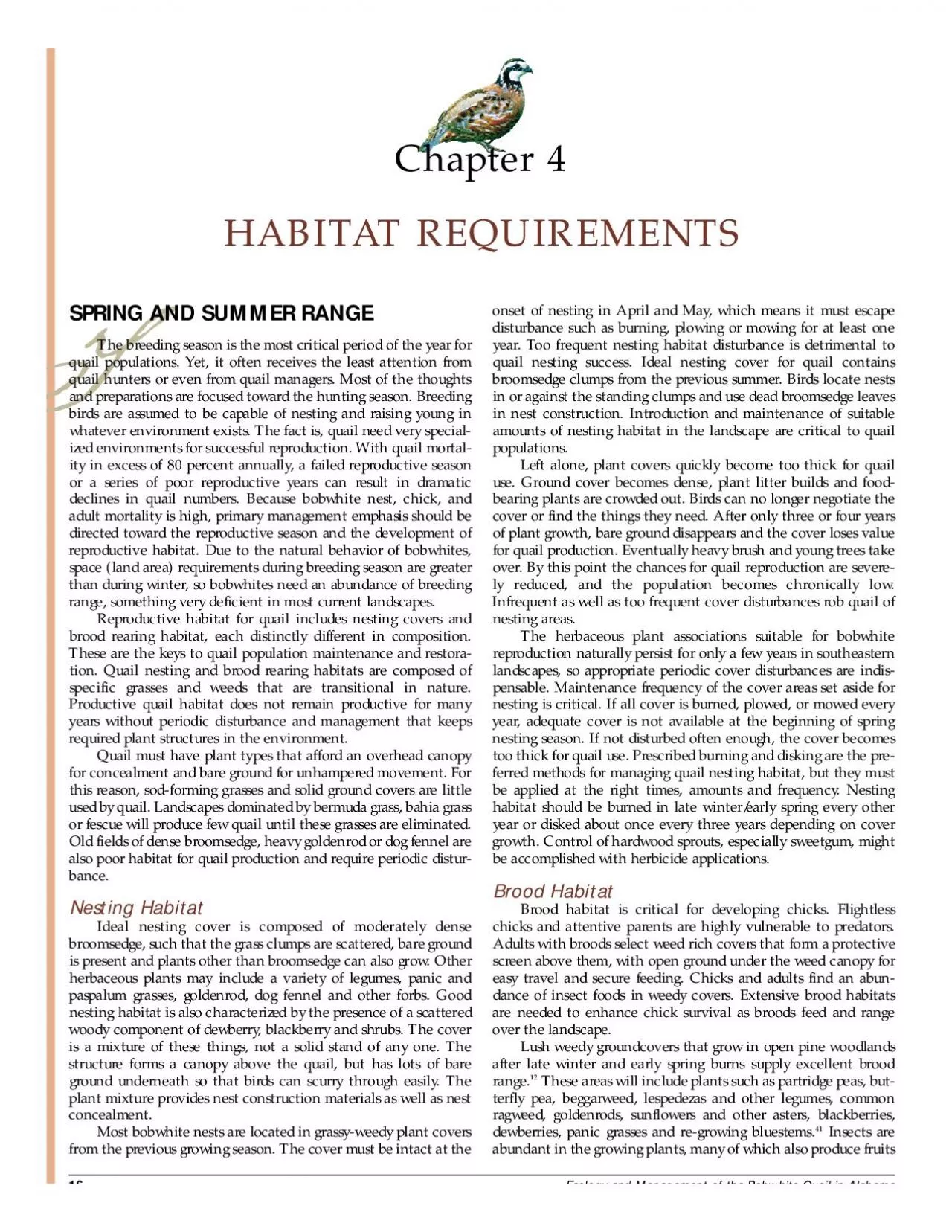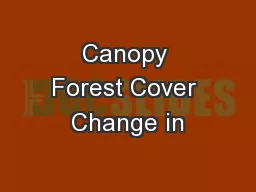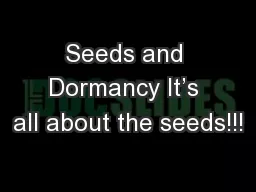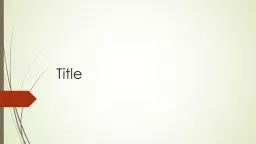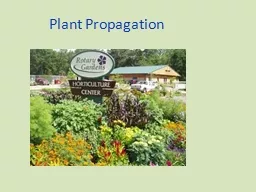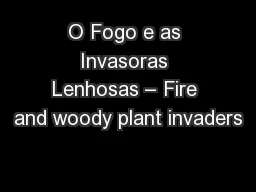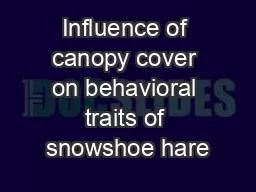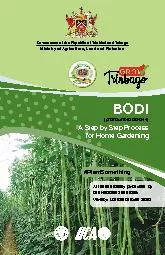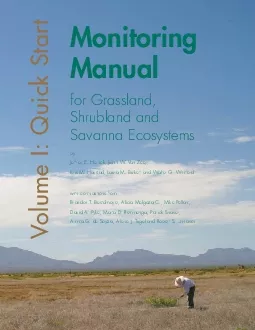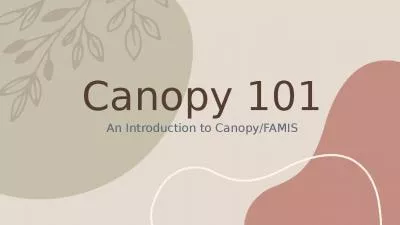PDF-and seeds The plant canopy provides protective cover above theds and b
Author : winnie | Published Date : 2021-09-15
Ecology and Management of the Bobwhite Quail in Alabama17Ideal quail nesting cover is composed of moderately dense broomsedge such that the grass clumps are scattered
Presentation Embed Code
Download Presentation
Download Presentation The PPT/PDF document "and seeds The plant canopy provides prot..." is the property of its rightful owner. Permission is granted to download and print the materials on this website for personal, non-commercial use only, and to display it on your personal computer provided you do not modify the materials and that you retain all copyright notices contained in the materials. By downloading content from our website, you accept the terms of this agreement.
and seeds The plant canopy provides protective cover above theds and b: Transcript
Download Rules Of Document
"and seeds The plant canopy provides protective cover above theds and b"The content belongs to its owner. You may download and print it for personal use, without modification, and keep all copyright notices. By downloading, you agree to these terms.
Related Documents

